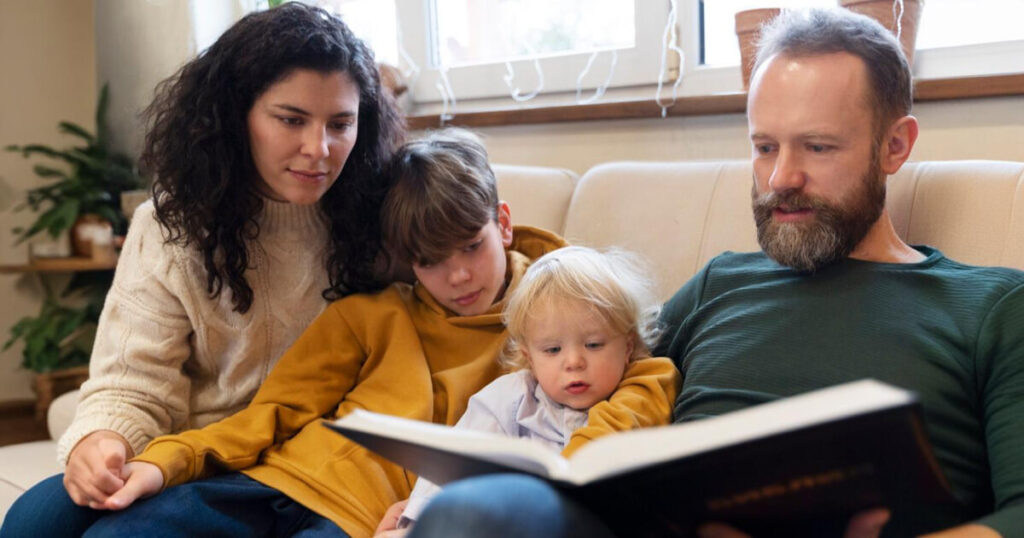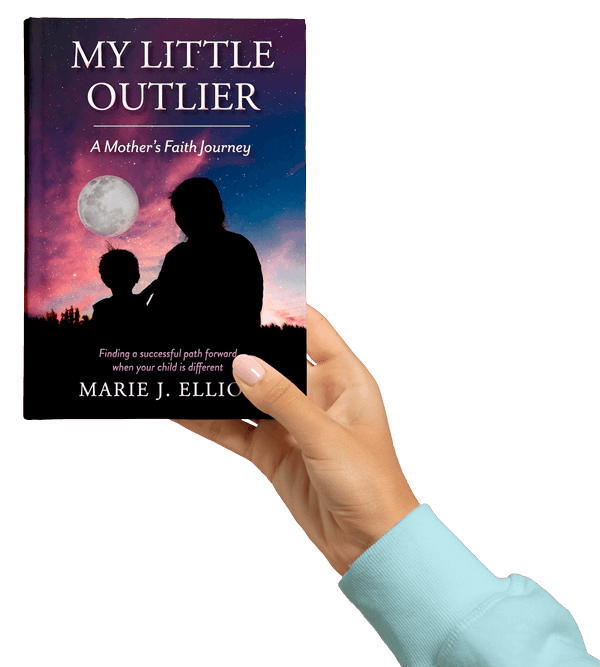Parenting is one of the most rewarding and challenging endeavors in which one can engage. For first-generation immigrants, this journey often involves the additional complexities of juggling cultural expectations, navigating unfamiliar systems, and conforming to new norms. For most, it is the promise of a successful and satisfactory life in the host country that drives them to push boundaries and give their best every single day. Yet, as a parent, this drive and ambition take a different form when faced with the unique difficulties that come with parenting a child who may not fit into the neurotypical standard that is expected by society.
As an immigrant myself, my experience in the California Bay Area was one of hope, ambition, and striving to excel in every aspect of life. Like many others who came to this country, I had high standards for myself and my family. I wanted to succeed professionally, personally, and, most importantly, as a parent. I worked hard every day, giving my best in all areas of life, always thinking ahead to provide a future filled with opportunities for my children. But when I discovered that one of my children faced difficulties navigating a world that seemed designed for most people, everything I thought I knew about parenting was turned upside down.
A wake-up call: When the world feels different for your child
In a society that places so much emphasis on achievement, it can be hard for parents to accept that their child might not fit the expected mold. The challenge becomes even more overwhelming when you realize that your child is different in ways that are hard to define and ways that are not easily recognized or understood by others. In the neurotypical world, many parents expect their children to adapt to societal norms without question. However, as a parent of a child who faces difficulties in this environment, you quickly come to the realization that this is not the case for everyone.
I was lost when I first learned of my child’s struggles. The California Bay Area, known for its competitive, achievement-oriented culture, can be a daunting place for parents whose children are different. There were so many questions and emotions swirling inside me, but no clear answers. I didn’t know where to turn, and the frustration of trying to find guidance in an environment that didn’t seem to understand my child only added to the confusion.
Finding your way: Navigating parenthood without a roadmap
In a community of young, ambitious parents, it felt like no one truly understood the struggles I was facing. While I had a few friends who were supportive, most of them were in the same boat as me, navigating the challenges of new parenthood with little experience.

- Feeling alone in parenthood: Many young parents struggle to find a support system that truly understands their challenges.
- Limited guidance: Friends may be supportive, but they often lack experience with unique parenting struggles.
- Navigating complex systems: Medical, educational, and social systems can feel overwhelming without proper guidance.
- Cultural barriers: Some cultures downplay disabilities or differences, making it harder to seek support.
- The need for advocacy: Without a clear roadmap, parents must learn how to advocate for their child’s needs.
The search for answers: Google and the paradox of too much information
In today’s digital age, many of us turn to Google for answers. When I was faced with the challenge of supporting my child, I, too, turned to the internet. I scoured articles, forums, and resources in search of the answers that would help me understand my child’s needs and how to best support them. But as I soon discovered, Google can be a double-edged sword. There is an overwhelming amount of information out there, but most of it is vague and general. What worked for one child might not work for another, and what worked for others might not even be relevant to my situation. The advice was often conflicting, and without knowing exactly what my child needed, I felt more lost than before.
While the internet can provide a wealth of information, it lacks the personal touch and specificity needed to address the unique needs of every child. I realized that what I truly needed wasn’t just a collection of articles and blog posts but a comprehensive guide that would help me understand how to find the right resources for my child. I didn’t need a book or website telling me what to do in a general sense; I needed something that would help me identify what would work for my child.
The power of trial and error: A parent’s journey of discovery
Over time, with a great deal of trial and error, I began to figure out what worked for my child. It wasn’t easy, and there were many moments of doubt, fear, and frustration along the way. But through persistence and self-reflection, I discovered the tools, resources, and strategies that helped my child navigate the challenges they faced. It wasn’t a quick fix or a simple solution; it was a journey, one that required patience, resilience, and a willingness to adjust along the way.
As I continued on this journey, I realized that the answers I was seeking weren’t out there in the form of easy-to-follow instructions or quick fixes. The key was in understanding my children’s strengths, challenges, and needs. I learned that the most important thing I could do as a parent was to be patient, to listen, and to continually seek the resources that would help my child thrive. But more importantly, I realized that this was a journey that had to be approached in a way that was specific to my child’s unique needs.
Creating a resource for other parents: Sharing my journey
In the midst of all the trial and error, I realized that what I had been searching for guidance, resources, and a step-by-step approach to navigating the challenges of parenting a different child simply didn’t exist in the form I needed it. I wanted to create a resource that would help other parents like me who were in similar situations. I wanted to share my journey and the lessons I had learned so that others wouldn’t have to go through the same confusion and frustration I did.
The book I created was born out of this desire to share my experiences, wisdom, and the tools that helped me. It’s not about telling parents what to do it’s about helping them discover what works for their child. The hardest part of parenting a child who is different is not executing solutions but rather figuring out what solutions to pursue. No book or online resource can tell you exactly what will work for your child. That’s something only you, as the parent, can discover. But there are tools, strategies, and frameworks that can help you along the way.
The parent’s role: Helping your child reach their full potential
One of the most important lessons I’ve learned as a parent is that the goal is not to push your child to meet someone else’s standards or achieve someone else’s vision of success. The goal is to help your child reach their full potential, whatever that may look like. Every child is different, and each child deserves an environment that allows them to thrive and be their best selves. No matter how different your child’s journey may be from others, it’s important to recognize that they have their unique strengths and abilities that deserve to be nurtured.
A guide to supporting your unique child
A Guide to Supporting Your Unique Child empowers parents to embrace their child’s individuality, providing practical tools, strategies, and insights to help them thrive. This book offers a roadmap to navigate challenges, advocate effectively, and create a supportive environment tailored to their needs.

- Parenting with purpose: A wise neighbor once told me, the goal of parenting is to help your child reach their full potential, not to push them to be the best version of someone else’s child. This simple yet profound insight changed my perspective forever.
- Focus on your child’s journey: Every child is different, and comparisons only create unnecessary pressure. This book helps you shift your mindset from comparison to empowerment, allowing you to nurture your child’s strengths.
- Practical tools & strategies: Designed for parents raising children with unique challenges, this guide provides actionable steps, resources, and insights to help you navigate your child’s path to success.
- You know your child best: No matter what others say, you are the expert on your child. This book equips you with the confidence and strategies to advocate for their needs and build a supportive environment tailored to them.
- A roadmap for parenting success: Whether you’re facing educational struggles, social challenges, or emotional hurdles, this book offers a structured approach to finding solutions that work for your child and your family.
Your child’s success isn’t about fitting a mold; it’s about unlocking their potential. This book is your guide to making that happen.
Conclusion
Parenting a child who is different is a journey filled with uncertainty, fear, and doubt. But it is also a journey filled with love, growth, and discovery. As a parent, you have the ability to help your child find their own path to success. The key is to understand that there is no one-size-fits-all solution. What works for one child may not work for another, and the answers you need are often found through trial, error, and patience.
I created this book to share my journey and to help other parents like me who are navigating similar challenges. I want to empower you to trust your instincts, to know that you are the best advocate for your child, and to provide you with the tools and strategies to help your child succeed. It is my hope that this resource will make your journey a little easier and a little more manageable.
Remember, you are not alone in this. There is a path forward, and you have everything you need to help your child reach their full potential.





